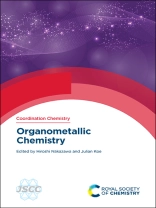Designed for teaching, this English translation of the tried and tested Organometallic Chemistry 2/e textbook from the Japan Society of Coordination Chemistry can be used as an introductory text for chemistry undergraduates and also provide a bridge to more advanced courses. The book is split into two parts, the first acts as a concise introduction to the field, explaining fundamental organometallic chemistry. The latter covers cutting edge theories and applications, suitable for further study.
Beginning with fundamental reaction patterns concerning bonds between transition metals and carbon atoms, the authors show how these may be combined to achieve a desired reaction and/or construct a catalytic cycle. To understand the basics and make effective use of the knowledge, numerous practice questions and model answers to encourage the reader’s deeper understanding are included.
The advanced section covers the chemistry relating to bonds between transition metals and main group elements, such as Si, N, P, O and S, is described. This chemistry has some similarities to transition metal-carbon chemistry, but also many differences and unique aspects, which the book explains clearly.
Organometallic complexes are now well known and widely used. In addition, transition metal complexes with main group element other than carbon as a ligating atom are becoming more important. It is thus important to have a bird’s-eye view of transition metal complexes, regardless of the ligand type. This book acts as solid introduction for chemistry students and newcomers in various fields who need to deal with transition metal complexes.
Tabla de materias
What is Organometallic Chemistry; Basic Concepts Relating to Organometallic Complexes; Bonds in Organometallic Complexes; Carbonyl, Olefin and Phosphine Complexes; Carbene Complexes — Complexes with MQC Double Bonds; Basic Reactions of Organometallic Complexes; Catalysis by Organometallic Complexes; Chemistry of Transition Metal Complexes with Group 14 Elements: Transition Metal Complexes with Silicon, a Heavier Carbon Group Element; Chemistry of Transition Metal Complexes with Group 13 Elements: Transition Metal Complexes with Lewis Acidic Ligands; Chemistry of Transition Metal Complexes with Group 15 Elements: Transition Metal Complexes with One Lone Pair of Electrons on the Coordinating Atom; Chemistry of Transition Metal Complexes with Group 16 Elements: Transition Metal Complexes with Two Lone Pairs of Electrons on the Coordinating Atom; Nobel Prizes Relating to Organometallic Chemistry; Problem Solutions












